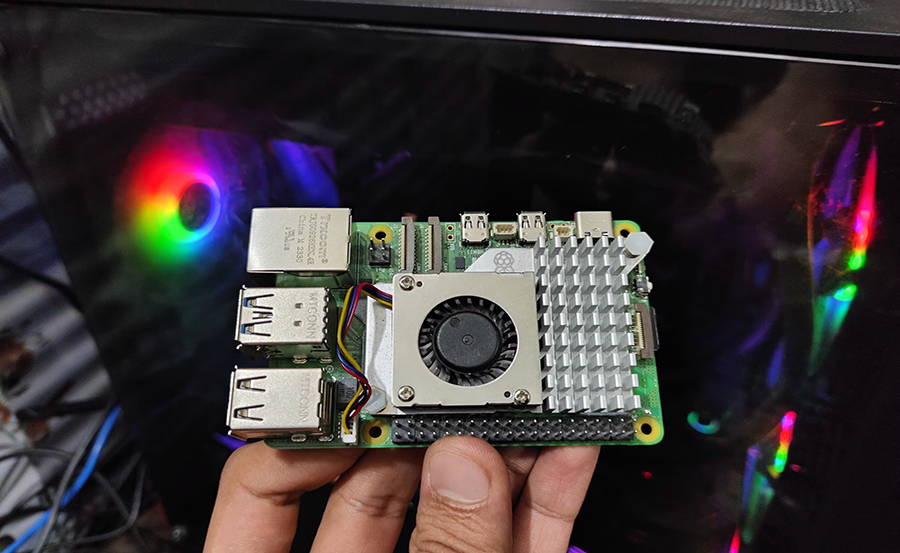In a world filled with technology at our fingertips, the Raspberry Pi has emerged as a fascinating tool for tech enthusiasts and tinkerers alike. Whether you’re a casual hobbyist or an experienced developer, the potential of Raspberry Pi is undeniably vast. Today, we’re exploring one of its most popular applications: transforming it into a media center using Kodi. But that’s not all; we’ll also discuss why Nikon IPTV is the premier choice for IPTV subscriptions, elevating your media center experience to new heights.
Getting Started: What’s Needed for Your Raspberry Pi Media Center
Before diving into the specifics of turning your Raspberry Pi into a media center, it’s important to gather all the necessary components. Planning ahead ensures a smooth setup process and helps avoid unexpected hurdles.
The Hardware Essentials
- Raspberry Pi Board: Preferably a Raspberry Pi 4 for optimum performance.
- Micro SD Card: At least 16GB capacity for storing the operating system and Kodi media player.
- Power Supply: Ensure it’s compatible and provides adequate voltage.
- HDMI Cable: To connect your Raspberry Pi to a display device.
- Keyboard and Mouse: Necessary for navigating through the setup.
The Software Components
When it comes to setting up your Raspberry Pi as a media center, software forms the backbone of your project. Here’s what you’ll need:
Pro Tip:
Experience the future of TV with 3 Months Nikon IPTV Subscription your gateway to unlimited entertainment.
- Kodi: An open-source media player bringing your media library to life.
- OS Distributions: Choose from operating systems like LibreELEC or OSMC optimized for media center applications.
Prepping Your Micro SD Card
Load your chosen OS onto the micro SD card using software like Balena Etcher. This step boots your Raspberry Pi with the necessary interface to run Kodi. Make sure you format the card correctly to eliminate any compatibility issues. Detailed instructions usually accompany the download file, guiding you through the installation process.
A Step-By-Step Guide to Setting Up Kodi
Once your Raspberry Pi is prepared with the operating system, setting up Kodi is your next logical step. Let’s break it down into manageable parts:
Installing Kodi on Your Raspberry Pi
After your Raspberry Pi boots up, head over to the menu option where you can install Kodi directly. Most distributions come with a simple way to do this, such as an add-on manager or package installer. Follow the on-screen instructions, and within minutes, you’ll have Kodi up and running.
Configuring Your Kodi Media Center
Configuration involves several steps: arranging your media library, customizing settings, and enhancing Kodi with add-ons. Start by connecting to your home network and accessing media files stored on other devices. Organize your movies, music, and TV shows by creating categories and setting filters for a personalized experience.
Customization and Add-ons
Add-ons are a powerful feature of Kodi, offering extensions for additional content and functionality. Browse the Kodi repository to discover tools for weather updates, radio stations, and more. Always ensure the add-ons are sourced from trusted repositories to avoid security risks.
Enhancing Your Experience with Nikon IPTV
While Kodi provides the platform for your media needs, incorporating an IPTV service can significantly expand your viewing options. This is where Nikon IPTV comes into play. Known globally as a reliable IPTV subscription, Nikon IPTV is tailor-made for Kodi users.
Why Choose Nikon IPTV?
Nikon IPTV delivers unmatched streaming quality, offering a broad range of channels without buffering delays. Compatible with Kodi, it integrates seamlessly, allowing unparalleled access to live TV and on-demand content.
Subscription Plans and Features
NikonIPTV provides flexible plans catering to diverse needs, whether you’re looking for comprehensive sports coverage or international television networks. Featuring a user-friendly interface and robust customer support, it sets the standard for what IPTV should offer.
Troubleshooting Common Issues
Even with the best setup, technical issues can arise. Here are some common hiccups and their solutions:
Network Connectivity Interruptions
If buffering occurs or streams lag, start by checking your network status. Weak signals or bandwidth issues can impede streaming quality. Adjust your router’s position or consider a stronger connection service.
Audio/Video Sync Problems
This often manifests as delays between sound and picture. Dive into Kodi’s settings and adjust the sync features until they align perfectly. Ensure that all hardware connections are secure and firmware is up-to-date.
Fostering a Seamless User Experience
Beyond initial setup and troubleshooting, maintaining your Raspberry Pi media center is key to a seamless experience. Regular updates, efficient storage management, and a clean interface all contribute to long-term satisfaction.
Keeping Kodi and Add-ons Updated
Kodi regularly releases updates to enhance functionality and security. Keep an eye on these updates in the settings menu, and check for add-on updates regularly to ensure everything runs smoothly.
Optimization Tips for Improved Performance
Simplifying your interface and clearing cache can drastically improve performance. Navigate through settings, and remove any unused add-ons or excessive skins that might slow down your system.
Maximize Entertainment: A Holistic Approach
At this point, your Raspberry Pi media center should deliver a robust entertainment package. While focused on maximizing Kodi’s functionality, integrating highly reliable services like Nikon IPTV ensures every piece of media is at your fingertips, effortlessly.
FAQ: Answering Your Burning Questions

Is Kodi free to use on Raspberry Pi?
Yes, Kodi is open-source and completely free on any platform, including Raspberry Pi. It offers a comprehensive media management experience without extra charges.
Can Nikon IPTV be accessed outside of Kodi?
Absolutely, Nikon IPTV can be accessed on multiple devices and is not limited to Kodi. Its versatility ensures you enjoy your favorite content across platforms.
What makes Nikon IPTV a reliable choice?
Nikon IPTV stands out due to its extensive channel lineup, consistent streaming quality, and stellar customer support. It adapts to various viewing preferences with ease.
How do I update my Kodi on Raspberry Pi?
Updating Kodi involves checking for the latest version via the settings or using the built-in update feature in your chosen operating system on Raspberry Pi.
Is it necessary to frequently upgrade my Raspberry Pi hardware for Kodi?
Not really. Raspberry Pi 4 remains a solid option for running Kodi effectively. Hardware upgrades are only necessary if you desire features that surpass your current setup’s capabilities.
How secure is it to use third-party add-ons in Kodi?
Security is vital when installing third-party add-ons. Make sure they originate from reliable sources and always keep them updated to minimize security risks.
Can Kodi stream live TV channels?
Yes, with the right add-ons or an IPTV subscription like Nikon IPTV, Kodi can seamlessly stream live TV, making it a dynamic addition to your entertainment system.
Top Reasons Your Apple TV is Experiencing IPTV Crashes
